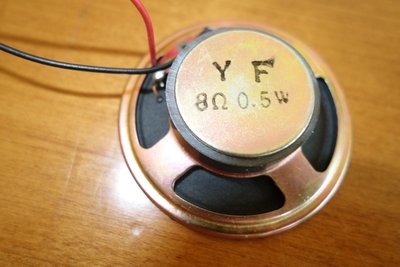First post, by infiniteclouds
I had bought this guy off E-bay since the Dell XPS case I'm using has no PC Speaker cone and the one from my LianLi case has different connectors -- plus I wanted to keep it with that case.
To my surprise, the volume was really quiet! I thought it must be because it is 0.25w so I went ahead and bought this...
But the volume is still very low. When I tested a simple piezo speaker that comes with motherboards nowadays for simple POST beeps it was noticeably louder. Am I missing something? My Lian Li case has really awesome PC Speaker sound.

